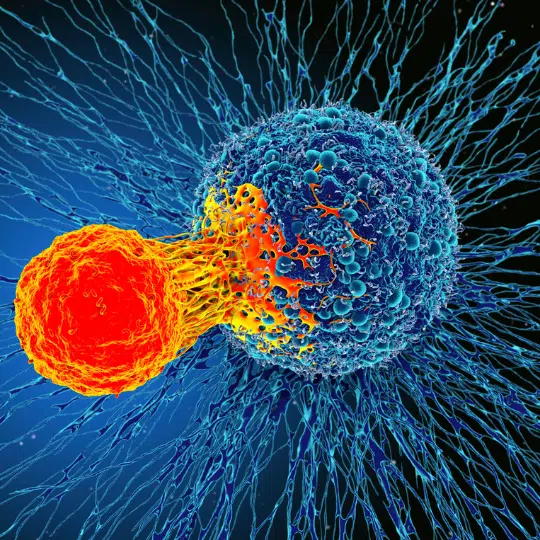
The body’s first line of defense against invaders entering the body is innate immunity, sometimes known as “non-specific” immunity; However, when matters spiral out of control, the innate immune system calls for aid from the adaptive immune system. Dendritic Cells act as a bridge between the innate immune system and the adaptive immune system.
The immune system is the strongest weapon the body has to use against invasion. It is trained to fight against diseases including cancer. The immune system is broadly divided into two parts, the innate and the adaptive immunity. Innate immunity or “non-specific” immunity is the body’s initial line of defense against intruders entering the body. It responds in the same way to all germs and foreign substances. The innate immune responses are initiated by Macrophages, Natural Killer Cells, and Dendritic Cells.
Macrophages are a type of white blood cell that surrounds and eliminates microorganisms, gets rid of dead cells and activates other immune system cells. They are also called the “Big Eaters” as they eat dead cells in the body.
Natural Killer Cells are immune cells that contain granules, or tiny particles, which contain enzymes that can destroy tumour cells or virus-infected cells.
Finally, Dendritic Cells are a distinctive type of immune cells that are found in tissues, such as the nose and lungs. They boost the immune response by presenting antigens on their surface to other cells of the immune system. When a foreign substance enters the body, Dendritic Cells receive a signal identifying the intrusion.
Dendritic Cells are the bridge between the innate and adaptive immune systems. They metabolize a pathogen and then carry the information about it to the adaptive immune system cells. This information is produced and shared in the form of antigens.
Antigens are the traces that pathogens leave behind, they are molecules that are found on the surface of pathogens that can be detected by the adaptive immune system for recognition. The Dendritic Cells pass this information to the T-cells.
The Adaptive Immune System has two main components, the T-cells and B-cells, and it is more efficient than the innate immune system as it can differentiate types of pathogens.
T-cells come into play when an infection has already occurred, therefore, initiating the cell-mediated immune response.
On the other hand, B-cells join the defense when the pathogens have entered but haven’t yet caused any disease. Helper T-cells take signals from the Dendritic Cells or the Macrophages and they can be divided into 2 groups: the first one is formed by effector T-cells which are cells that cycle through the body and alarm other white blood cells. The second one is memory T-cells which keep a record of the antigen for future purposes.
As for the B-cells, they produce chemicals called antibodies, these antibodies crowd around the pathogen and mark it. They then signal the Macrophages to come and kill the marked pathogen. When they come across an antigen, much like the T-cells, B-cells also produce memory B-cells. Both, the T-cells and B-cells keep a record of all encountered intrusions and thus strengthen the body’s immune responses to them.
The innate response is quicker despite being non-specific. It activates a defense system within hours. However, when matters spiral out of control, the innate immune system calls for aid from the adaptive immune system. This system can take days to generate a response but the next time it encounters a pathogen, it will not allow it to harm the body.
Different types of immunotherapy exist to boost innate and adaptive responses, such as MAT which focuses on Macrophages, IMT and NKT, which focus on Natural Killers, DCT which uses Dendritic Cells bridging the innate system to the adaptive, and finally, CAR NK Therapy, which boosts the adaptive immune responses.
© 2025 Immucura. All Rights Reserved
Loading form – please wait…
Loading form – please wait…